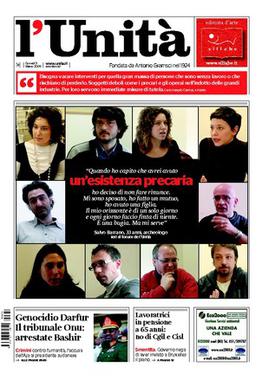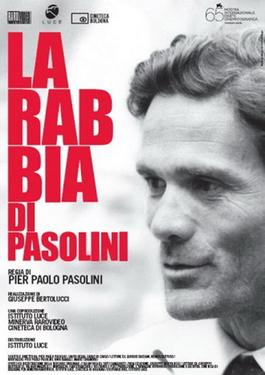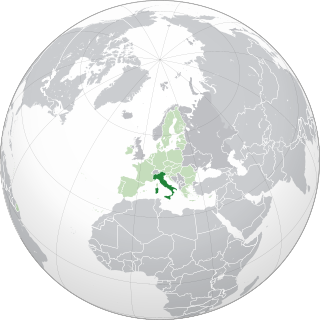
Pier Paolo Pasolini was an Italian poet, film director, writer, actor and playwright. He is considered one of the defining public intellectuals in 20th-century Italian history, influential both as an artist and a political figure. He is known for directing the movies from Trilogy of Life.

Giovannino Oliviero Giuseppe Guareschi was an Italian journalist, cartoonist, and humorist whose best known creation is the priest Don Camillo.

The Italian Communist Party was a communist and democratic socialist political party in Italy. It was founded in Livorno as the Communist Party of Italy on 21 January 1921, when it seceded from the Italian Socialist Party (PSI), under the leadership of Amadeo Bordiga, Antonio Gramsci, and Nicola Bombacci. Outlawed during the Italian fascist regime, the party continued to operate underground and played a major role in the Italian resistance movement. The party's peaceful and national road to socialism, or the Italian road to socialism, the realisation of the communist project through democracy, repudiating the use of violence and applying the Constitution of Italy in all its parts, a strategy inaugurated under Palmiro Togliatti but that some date back to Gramsci, would become the leitmotif of the party's history.

Silvana Mangano was an Italian film actress. She was one of a generation of thespians who arose from the neorealist movement, and went on to become a major female star, regarded as a sex symbol for the 1950s and '60s. She won the David di Donatello for Best Actress three times – for The Verona Trial (1963), The Witches (1967), and The Scientific Cardplayer (1972) – and the Nastro d'Argento for Best Actress twice.

Luigi Longo, also known as Gallo, was an Italian communist politician and general secretary of the Italian Communist Party from 1964 to 1972. He was also the first foreigner to be awarded an Order of Lenin.

l'Unità is an Italian newspaper, founded as the official newspaper of the Italian Communist Party (PCI) in 1924. It was supportive of that party's successor parties, the Democratic Party of the Left, Democrats of the Left, and, from October 2007 until its closure in 2017, the Democratic Party.
Famiglia Cristiana is an Italian weekly magazine published in Alba, Italy. The magazine is a Catholic news magazine and has been in circulation since 1931.

Biagio Marin was a Venetian and Italian poet, best known for his poems in the Venetian language. In his writings he never obeyed rhetoric or poetics. He only employed a few hundred words for his poems.
Gente is a popular and long-running Italian weekly current affairs and celebrity gossip magazine.

Oggi is an Italian weekly news magazine published in Milan, Italy. Founded in 1939 it is one of the oldest magazines in the country.

La Rabbia is a 1963 Italian documentary film produced by Gastone Ferranti and directed by Pier Paolo Pasolini in the first half and by Giovannino Guareschi in the second.

Epoca was an illustrated weekly current events magazine published between 1950 and 1997 in Milan, Italy. It was one of the leading magazines during its run.

Tempo was an illustrated weekly news magazine published in Milan, Italy, between 1939 and 1976 with a temporary interruption during World War II.
Grand Hotel is an Italian weekly women's magazine, published since 1946. The magazine is headquartered in Milan, Italy.

The Red Flag was a journal on political theory, published by the Chinese Communist Party. It was one of the "Two Newspapers and One Magazine" during the 1960s and 1970s. The newspapers were People's Daily and Guangming Daily. People's Liberation Army Daily is also regarded as one of them.
Noi donne is a monthly feminist magazine published in Rome, Italy. It is one of the most significant feminist publications in the country.

The Italian nuclear weapons program was an effort by Italy to develop nuclear weapons in the late 1960s and early 1970s. Italian scientists such as Enrico Fermi and Edoardo Amaldi had been at the forefront of the development of the technology behind nuclear weapons, but the country was banned from developing the technology at the end of the Second World War.

Cecilia Mangini was an Italian film director, considered the first female documentary filmmaker in Italy.

Pattuglia was a weekly communist satirical magazine published between 1948 and 1953 in Milan, Italy. It was official media outlet of the youth organization of the Italian Communist Party. Its subtitle was il corriere dei giovani.















